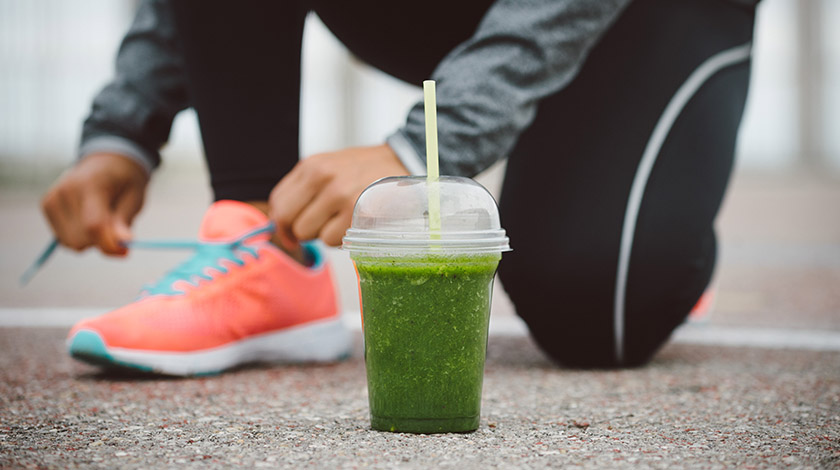“Don’t talk to me before I’ve had my coffee”
A phrase that all of us have heard. We all know some people who cannot start their day without several gallons of caffeine which gets them the strength they need. So why cut back on coffee?
Caffeine is a powerful stimulant for muscles and nerves – which is great. However, it comes with its own set of side effects. You must definitely cut back on caffeine if you are sensitive to it, or a poor sleeper, or pregnant. Coffee also makes you hit the bathroom more often and can trigger migraine problems.1,2
Caffeine partners
Here are some of the most common foods containing caffeine:
- A cup of instant coffee: 100mg
- A cup of filtered or brewed coffee: 140-260mg
- A cup of tea: 75mg
- A can of energy drink: 80mg
- A can of cola: 40mg
- A 50g bar of chocolate: 35mg3,4
Some medicines also contain caffeine.
Alternatives to Caffeine

Drink smoothie
When it’s time for a daily coffee break, switch to fruit and herbal teas instead. When you visit the coffee shop with friends, go for a fresh juice or smoothie.
Go for a Walk
Cutting back on caffeine may tire you. To gain energy, go for a walk during lunch time.
Stay hydrated
Feel like taking a gulp of coffee? Take a gulp of water instead.
Water keeps you hydrated and healthy. It also manages your tiredness and coffee cravings.1 Always keep a large bottle of water ready by your side. You may also try adding flavor to the water, such as some lemon or mint for delicious drink.
The more water you drink, the more energetic you’ll feel and the less you’ll rely on caffeine. You will also reduce your waistline and become healthier.
Sources
- Liquids for life.The British Nutrition Foundation. 20 June 2012
- Migraine triggers. Migraine Action. 20 June 2012
- How to Sleep Better WebMD. Visited 21 Aug 2013.
- Caffeine During Pregnancy - Topic Overview WebMD. 21 Aug 2013.

